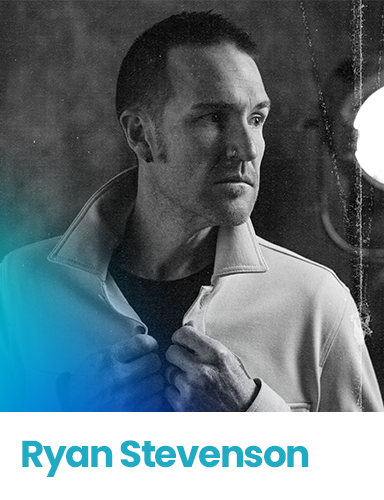
10 Ways to Use AI to Create Authentic Content
AI is being integrated into every aspect of our working lives as content marketers… and especially with content creation and repurposing. It can be great, but there’s a risk you can take it too far and end up stripping out the human side and sounding like a robot.
So how do you utilize AI to improve your systems and processes while still producing human-led, high-quality content? Here are ten practical tips to help you use AI to create authentic content while keeping your unique voice.
1. Functional vs thought leadership – know when to use AI to create authentic content… and when to stay clear!
There’s content that at Content 10x we call functional or commodity content – e.g. a YouTube video summary, podcast show notes, or a meta description.
It’s informative content and it’s fairly undifferentiated. Often it’s in the form of summarizing long-form content that you have already created.
AI is great for writing a first draft of this type of content.
But then, there’s thought leadership content – this needs strong well thought-through points of view, it often evokes emotion, maybe even divides opinion, and it’s usually based on knowledge and beliefs.
Please don’t get AI to write this content!
Thought leadership pieces can be in the form of blog posts, papers, social media posts that share insights and stories, but they require a human touch to truly resonate. Leave this content to be written by humans (but AI can help with the research, ideation and copy review, more on that soon).
2. Always edit AI-generated content
No matter how advanced AI becomes, it’s crucial to have a human review its output. Just as you would proofread a colleague’s work, ensure that any AI-generated content undergoes a thorough edit. This step helps align the final product with your brand voice and maintains authenticity.
3. Use AI for content review, but don’t let it rewrite
AI is a helpful resource for reviewing your already written content. It’s great for picking out spelling, grammar, and punctuation issues. It can help with reviewing tone and structure too, as well as helping to improve SEO.
However, we suggest you avoid allowing AI to make direct changes; instead, ask for suggestions and explanations so you get to preserve your original voice.
4. Provide detailed prompts
The quality of AI-generated content is directly linked to the input it receives. When using AI tools, create specific briefs that outline your brand voice, target audience, and content goals. The more context you provide, the more tailored and human-like the result will be.
Many generative AI tools will let you share examples of ‘what good looks like’ – where it will try to mimic the tone, structure, and so on.
5. Avoid robotic language
This is stating the obvious – but as well as editing the robotic content that AI creates after the fact, you can try and make it sound less robotic to begin with, before it goes to work.
AI-generated content can often fall into predictable patterns or use clichéd phrases, you can help it break this pattern. Create a list of “AI-sounding” words or phrases to avoid in your prompts—classic examples are “leverage,” “delve,” “craft,” or “elevate.”
AI-generated content can also have unusual or overly complex sentence structures, repetitive use of specific vocabulary, a lack of depth in analysis, and dramatic and flowery language. You need a human to review the final outputs to get away from this or the result will sound robotic, but you can ask it not to do this to begin with as well (the result will not be perfect, but it might be a touch less robotic!).
6. Emphasize storytelling
Humans will always be best at storytelling! AI-generated content lacks personal experience or emotion – for obvious reasons, it’s not a person! So to sound more human, make sure to emphasize storytelling. AI can churn out data, but it can’t share a story that paints a picture or tugs at the heartstrings. So, focus on weaving compelling stories.
7. Include human touchpoints
Things like personal anecdotes, interviews, and testimonials are the elements that add that special human touch that AI can’t replicate. Within the human touchpoints, focus on empathy. It’s so important that we tailor content to address the specific needs and concerns of our audience.
8. Engage with your audience
In our episode with Ian Anderson Gray, he discussed how he thinks more people will be doing livestreams – like LinkedIn lives, Instagram lives, and live webinars. This is because you can engage with your audience in real-time and they can engage with you. Live content ticks so many boxes – transparency, authenticity, engagement with each other. It doesn’t get much more ‘human’ than that!
You don’t have to create live content, that’s just one example, but think of ways you can create content that allows you to engage.
9. Use AI to streamline routine tasks
When we talk about AI in content creation, it doesn’t have to be the actual creation process itself, let AI handle repetitive tasks like data analysis or scheduling. This will help you to focus on the creative aspects of content creation that require a human touch. Think of AI as your handy assistant!
This is where we blend AI and human creativity: if you can nail combining the strengths of AI with human intuition and insight, you can end up with really innovative and engaging content – in less time!
10. Stay informed about AI developments
The landscape of AI is constantly changing. Keep yourself in the loop so you can use AI to enhance your work, not replace it. Look for ways to get assistance with the content that doesn’t require as much creativity, so that you can focus on creating content that is by humans for humans – when it needs to be!
Balancing AI assistance with human creativity
As you integrate AI into your content creation process, remember that finding the right balance between the bots and human insight is essential. By following these tips, you can use AI to create authentic content that resonates with your audience while still maintaining your unique voice.
Ultimately, the goal is to view AI as a powerful tool that complements your content strategy, rather than a replacement for human creativity and understanding.






















































































































